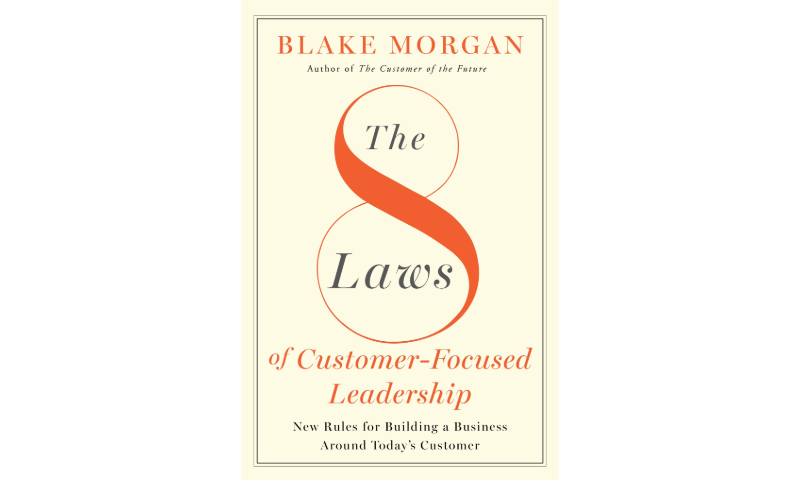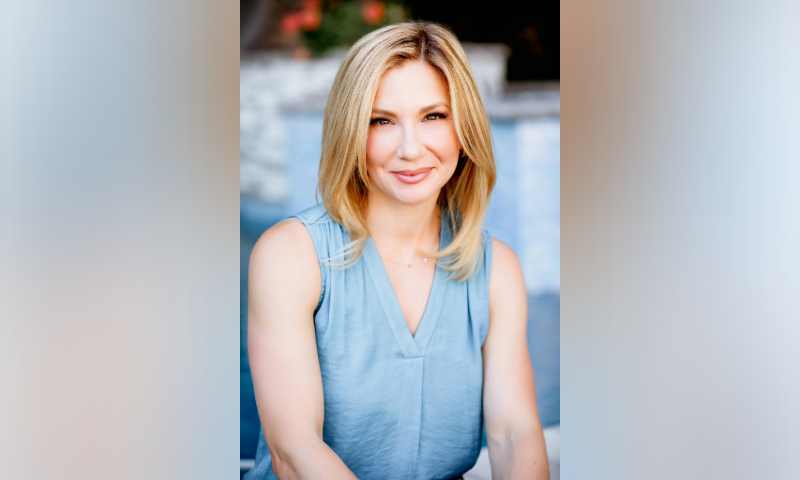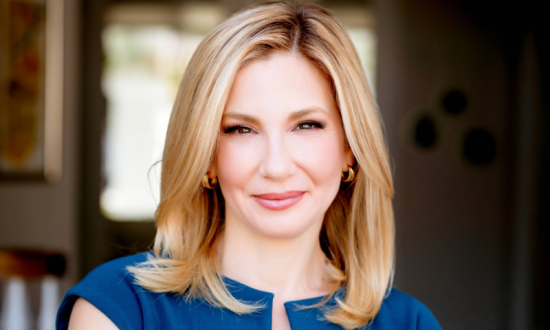Blake Morgan was called “The Queen of CX” by Meta. She is a customer experience futurist and author of three books on customer experience. Her new book is called The 8 Laws of Customer-Focused Leadership: The New Rules for Building A Business Around Today’s Customer. Blake has taught courses at Columbia University, Rutgers Executive MBA program and UC San Diego. She is an instructor for LinkedIn Learning. Blake is the host of The Modern Customer Podcast.
Recently, in an exclusive interview with CXO Magazine, Blake shared her professional trajectory, the theme of her latest book, ‘The 8 Laws of Customer-Focused Leadership’, the secret sauce behind her successful career, tips for delivering great CX with a limited budget, future plans, and much more. The following excerpts are taken from the interview.
Hi Blake. How did you first get into customer experience, and what inspires you to stay?
When I was 21, I moved to New York City to intern at a fashion magazine called Blackbook. That internship at a print magazine wasn’t producing a job but luckily, I got recruited to work at a conference production company producing events. I was tasked with producing conferences like “Content Week” and “Web 2.0 Day” and “Social Media Summit” back in 2007 and eventually was given the online portfolio of customer management and completely fell in love with it. Since then, I’ve been blogging and podcasting about the power of customer experience. Along the way I’ve held jobs at Intel and startups, but what I love most is thought leadership via content like books, keynote speeches and podcasts.
You have your third book coming out July 3rd 2024 called The 8 Laws of Customer-Focused Leadership with HarperCollins. What is the theme of this book?
In my research what I learned is that customer experience initiatives have to be driven from the top. If you want to create a customer-centric culture you cannot do that without leadership fully on board, engaged, and driving that culture every day. I interviewed many C-level leaders and shared their stories of customer experience transformations. The book follows a framework of C.X.L.E.A.D.E.R. and each acronym stands for a piece of creating this leadership culture within the organization.
- Create a customer experience mindset.
- eXceed Long-Term Profit Expectations by Focusing On Both Short-Term and Long-Term Profits.
- Lay out your customer experience strategy creation and stick to it.
- Embark on your 90 day get started plan.
- Anticipate the future by being a customer experience futurist.
- Don’t forget that employees are customers too.
- Evaluate success and measure what can be measured.
- Reaffirm the priority – keep CX front and center.

Can you please share the major takeaways from your 2nd bestselling book, “The Customer Of The Future” published by HarperCollins?
The customer of the future is already here. They want zero friction seamless customer experiences. There are five things they care about most, including 1. convenience, 2. quality, 3. price, 4. customer service, 5. trust, and transparency. The book tells stories, research, and data.
You are also the Advisory Board Member at Minerva CQ. Can you please tell us about this organization and your role in it?
Minerva CQ is an Artificial Intelligence startup focused on reducing call times in the contact center. AI can now create efficiencies for contact center agents, serving customers faster, more efficiently, and creating a better customer experience in the contact center.
In your experience, how can organizations effectively bridge the gap between customer experience (CX), employee experience (EX), and user experience (UX) to create a holistic approach that benefits all stakeholders?
If you want to bridge the gap among CX, EX, and UX, you have to first identify what these things actually are. You can’t just sit in your office and look at spreadsheets. You have to go talk to customers. You have to go talk to employees. And you have to understand what the user experience actually is for both parties. Many companies now view employees as customers. They see a direct line of sight between customer experience and employee experience. If employees are unhappy at work, they’re not going to have a smile in their voice. They’re not going to bring their whole selves to work and inspire innovation and energy. These are the things necessary to create a customer centric culture. If you want to bridge the gap, the first thing you have to do is decide what you want and what length are you willing to go to understand the reality of the state of these various things.

As a customer experience expert, what key performance indicators (KPIs) or metrics do you recommend organizations should track to gauge the effectiveness of their CX, EX, and UX initiatives?
There are a lot of customer experience metrics, employee experience metrics, and UX metrics but you have to figure out where you are trying to go and what metrics will measure performance to help you get there. What’s measured gets improved. You have to make sure that the metrics you set in place won’t be gamed by the employees. Too many companies use net promoter score thinking that this will simply fix their problems. But then what you find is that employee’s game the system and the results are not accurate. You can look at customer satisfaction. You can look at repeat purchases. If you’re really savvy, you’ll be tracking word of mouth and how many new customers you get through current customers by referral.
You can also look at sales. I believe if you are doing a good job, your sales will be going up. You can look at repeat calls to the contact center. Obviously, if you’re doing a good job with customer service, your call volume is going to go down. The better you leverage technology; the less customers and employees will struggle to solve problems themselves.
How do you see the role of technology, specifically data analytics and AI, in shaping the future of customer experience? Are there any specific tools or platforms that you believe are essential for organizations to adopt?
Obviously, the cloud has been a hugely important improvement for the contact center and customer experience world. Data analytics and AI can help companies level up their personalization game. They can get more accurate real time insights into what’s happening with their customers. They can scale up or scale down. The idea is to serve customers quickly, serve them in a quality way where the customer is getting value and they’re getting what they need. All the technology should be making employees and customers lives easier and better. When we think of the customer experience technology stack, increasingly the cloud is more and more important, but also CCaaS is very important. CCaaS stands for contact center as a service, which means using a contact center provider software rather than having your own equipment set up. This can help you scale quickly and offer better experiences.

Throughout your career, you have and continue to don numerous hats; fondly called as The Queen of Customer Experience, a best-selling author of three books, recognized as one of the top 40 global female keynote speakers, host of The Modern Customer Podcast, to name a few. Our readers would love to know the secret sauce behind your successful career.
The secret behind my career is simple, I just never give up. When I was a little kid, I played soccer and I wasn’t the fastest and I didn’t have the best footwork, but I learned to get back up no matter how many times I was knocked down. It taught me to be resilient. It taught me to not back down even when people say critical things, or I fail, or I’m told that a client wasn’t happy or a speech didn’t go well. I think another thing that’s really important is to only internalize feedback from people that are invested in your career.
What are your passions outside of work?
I am a wife and a mom with two amazing kids, ages four and seven. I spend a lot of time with my family, and that is very important to me. Outside of work, I’m very into fitness. I love to run and lift weights. I love to cook healthy food my family. And I really enjoy spending time with friends, swimming in Southern California, walking my dogs, or just relaxing.
Where do you see yourself in the next 5 years?
I’ll probably have written my fifth book. My kids will be nine and twelve, so I imagine spending more time with them, doing vacations that are great for big kids. I see myself speaking and traveling with my family and just continuing to do what I do every day, which is put in the work. For those long-term results that I’ve always chased.

What are your tips for delivering great CX with a limited budget?
If you have a limited budget, that means you can’t afford to mess things up with customers because it actually costs so much more when you let things get so bad that they break all the time. If you have a limited budget, then you need to be very clean and efficient about the work that you do and the investments that you make.
If you have a customer-centric culture. And you’re putting more effort up front to ensure that customers won’t need, that your products and services don’t break, that your employees are happy before it gets to the point where you lose them. Just because you have a limited budget doesn’t mean you can’t deliver great customer experiences. I believe you have to just have the customer experience mindset and the customer experience mindset is not just a mindset, it’s a way of life.
What is the one trend or approach in CX that every organization should be implementing?
I like the trend of a digital playground where you encourage employees to bring ideas to the table that leverage innovative technology. And you create a sandbox of digital tools where employees can try new things without being embarrassed or scared. Because the world is moving so fast, we need our employees to advocate for us to help move the needle forward, to innovate. And so having a digital sandbox for employees to play in can expedite that innovation.

